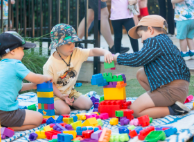Transitions can be tricky moments in a child’s day, especially in a busy classroom or home setting. Whether it’s moving from playtime to lunchtime or shifting from one learning station to another, these moments can sometimes lead to frustration or resistance. However, with the right approach, transitions can become calm and even enjoyable parts of a child’s routine.
Why Transitions Are Important
Children thrive on predictability. Knowing what comes next helps them feel secure and in control. When transitions are well-managed, children are more likely to cooperate, stay engaged, and maintain a positive attitude throughout the day. Smooth transitions also help reduce stress for both children and caregivers.
Strategies That Support Successful Transitions
-
Give Clear Warnings
Letting children know ahead of time that a change is coming can reduce surprises. For example, a simple “In five minutes, we’ll clean up and get ready for story time” helps children prepare mentally and emotionally for the shift. -
Use Visual or Audio Cues
Timers, songs, or visual schedules can help children understand when an activity is ending. A clean-up song or a cheerful chime can serve as friendly signals that it’s time to move on. -
Keep Routines Consistent
Following a regular daily schedule allows children to know what to expect. When the same transitions happen around the same time each day, children gain confidence and independence in managing the changes. -
Offer Choices
When possible, give children a sense of control. Instead of simply announcing the next activity, try saying, “Would you like to walk like a dinosaur or hop like a bunny to the reading corner?” These playful choices can make transitions fun. -
Model Calm and Positive Behavior
Children often mirror adult behavior. Using a calm voice, gentle gestures, and a positive attitude can encourage children to follow suit. When adults show patience, children are more likely to respond cooperatively. -
Acknowledge Feelings
It’s okay if a child feels reluctant to stop an enjoyable activity. Acknowledge their feelings with understanding: “I know it’s hard to stop building. You’re having so much fun! Let’s take a photo of your blocks before we move on.”
Helping Transitions Become Teaching Moments
Transitions are not just about moving from one thing to another—they’re valuable moments for teaching time awareness, flexibility, and emotional regulation. Over time, children learn that change is a normal part of life and that they are capable of handling it.
Conclusion
Helping children transition between activities doesn’t have to be a challenge. With clear communication, supportive routines, and a dash of creativity, these moments can become peaceful and productive. By guiding children gently through changes, we help them grow into adaptable and confident learners.


